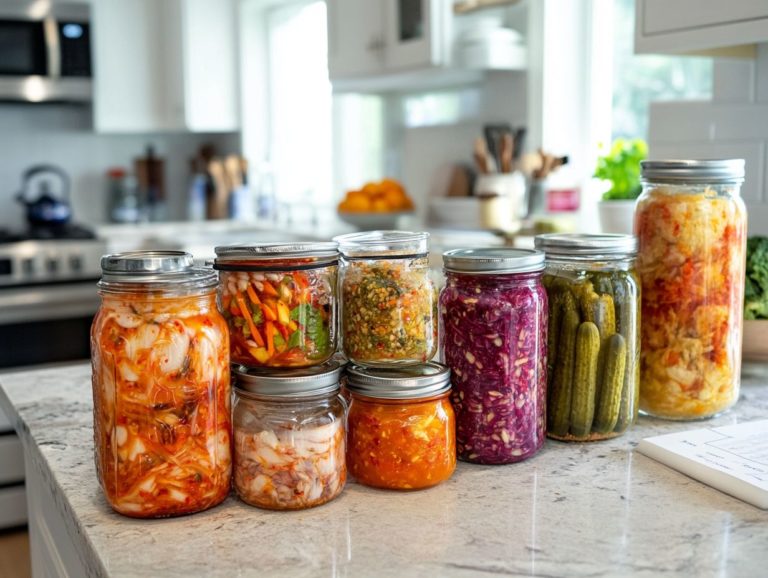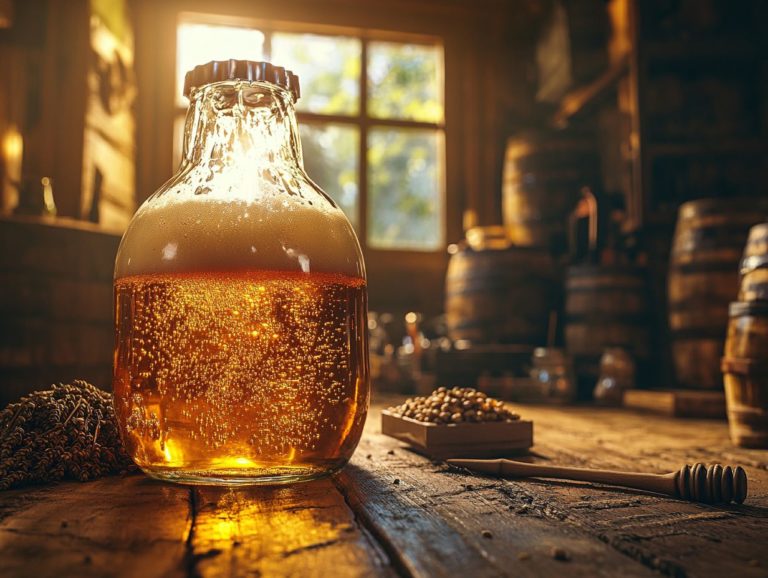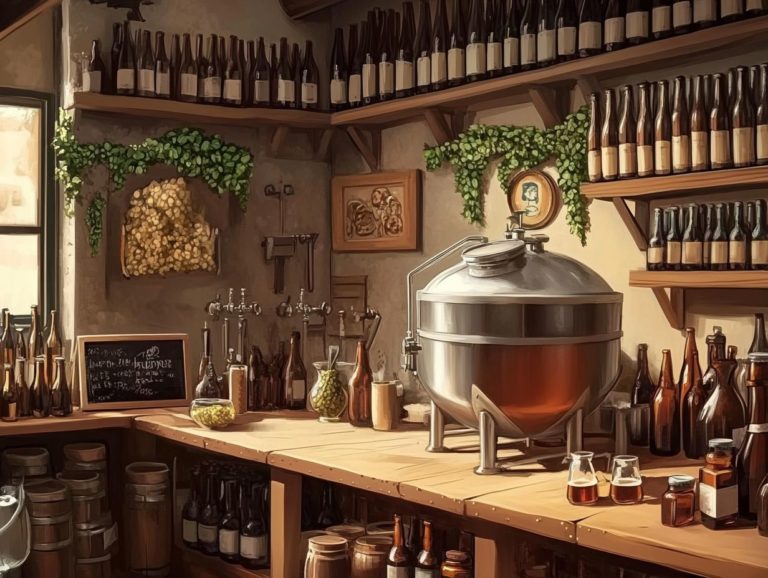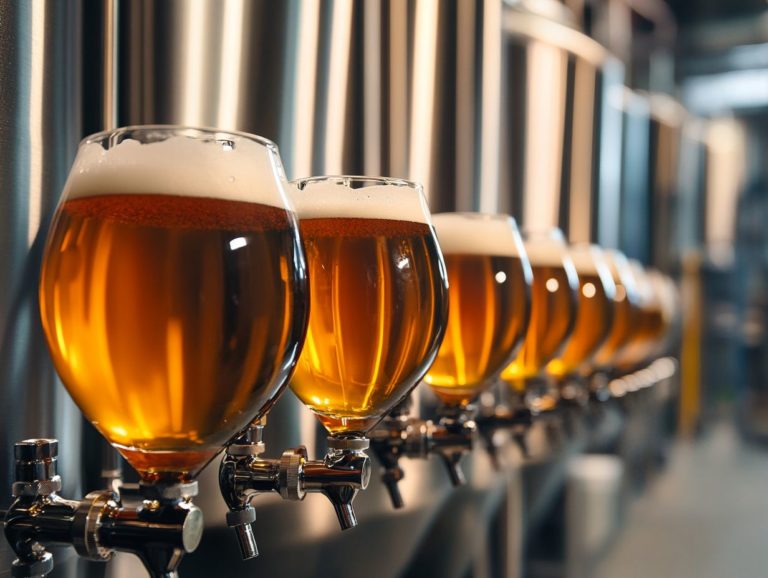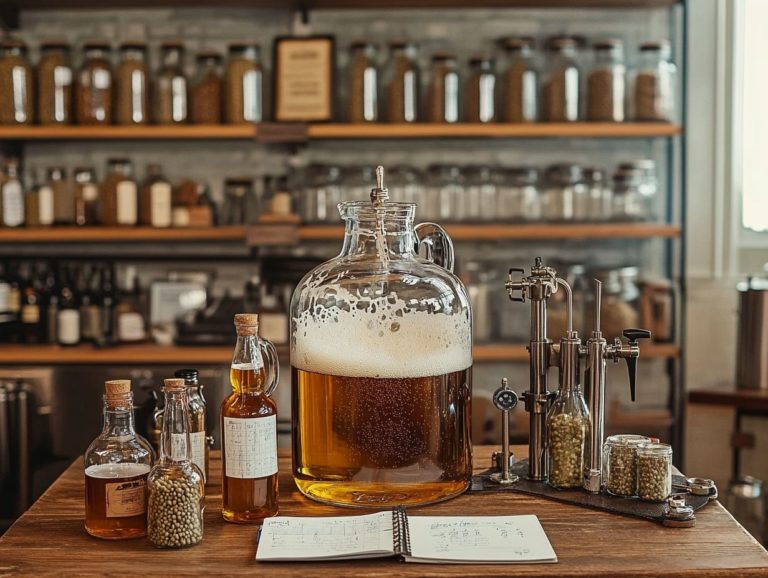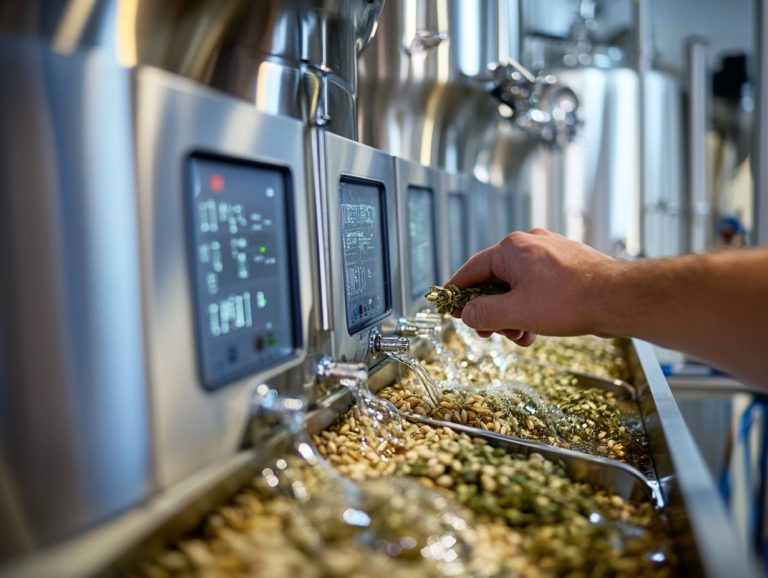What is Fermentation Trub and How to Handle It?
Fermentation trub is a common byproduct of the brewing process that many homebrewers and enthusiasts tend to overlook. During the boil, proteins and hop matter coagulate, forming sediment that settles at the bottom of the fermenter. Join us as we uncover the secrets of fermentation trub!
This article explores the fascinating world of fermentation trub, its composition, and the way it forms during fermentation. It also answers the pressing question of whether it s harmful to consume, while addressing potential risks involved, such as contamination and off-flavors.
You ll find practical tips on how to handle trub, whether you plan to discard it, reuse it for future brews, skim it off the top, or even compost it.
Uncover the secrets of this intriguing brewing residue and learn how to make the most of it! Whether through techniques like cold crashing or the use of specialized equipment, optimizing your trub management can significantly enhance your brewing process.
Contents
Key Takeaways:
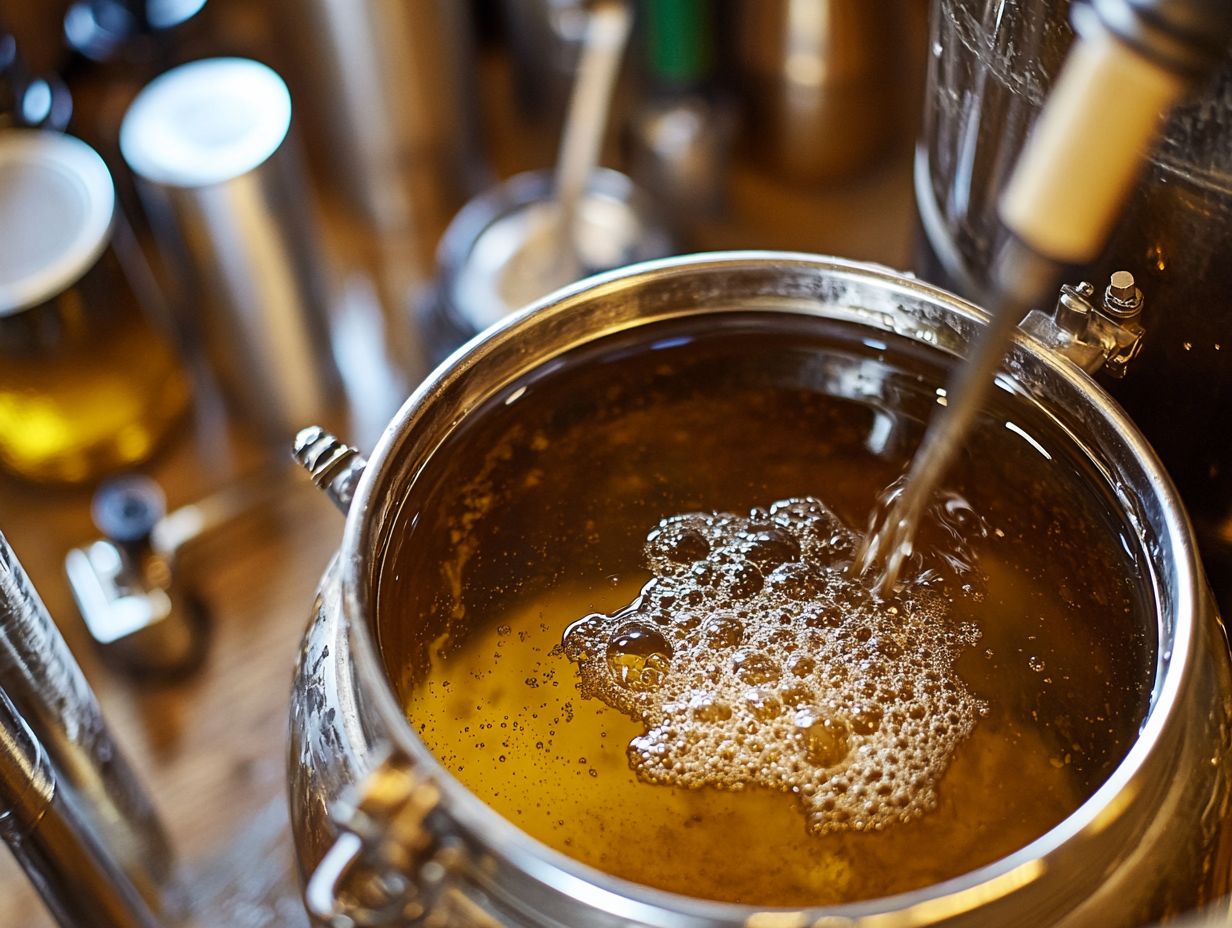
- Fermentation trub is the sediment or debris that forms during the fermentation process of beer or other beverages, often containing dead yeast cells and hop matter.
- It is not harmful to consume fermentation trub, but it may affect the taste and appearance of the beer, potentially introducing unwanted flavors and brownish foam.
- To handle fermentation trub, it can be removed through various methods such as cold crashing, filtering, skimming, or transferring to a secondary fermenter. It can also be reused for future brews or composted.
What is Fermentation Trub?
Fermentation trub is that thick, dense sediment you ll notice settling at the bottom of your fermentation vessel during the beer brewing process. It primarily consists of by-products from yeast activity, including dead yeast cells, proteins, and hop matter. This by-product emerges from the primary fermentation phase, where yeast diligently transforms wort into beer, often bringing along some brownish foam and a medley of unwanted flavors that demand careful handling to maintain the quality of your brew.
Grasping the nuances of fermentation trub is essential for you as a homebrewer, as it can significantly influence the final product. Employing effective trub removal strategies is crucial for brewing excellence.
What is the Composition of Fermentation Trub?
The composition of fermentation trub primarily consists of dead yeast cells, proteins, hop matter, and various by-products that contribute to its distinctive brownish foam and flavors. These elements can significantly impact the overall quality of your beer. The presence of fats can also influence the mouthfeel and stability of the final product.
Dead yeast cells play a key role in creating a unique mouthfeel but can also introduce off-flavors if they linger too long in the fermentation vessel. The proteins present in trub can affect your beer s haze and mouthfeel, adding richness while potentially causing clarity issues if not managed properly.
Hop matter adds residual bitterness and aromatic compounds that blend seamlessly with the base flavor profile, while by-products like diacetyl can create undesirable buttery notes if not addressed.
Understanding the delicate balance of these components is essential for you as a brewer, especially if you’re aiming to craft a clean and refined beer that showcases the desired characteristics.
How Does Fermentation Trub Form?
Fermentation trub forms during your brewing process when you boil the wort, and the hot break occurs. This leads to the coagulation of proteins and other particles, which settle at the bottom of your fermentation vessel as primary fermentation progresses alongside the yeast’s activity.
The boiling stage is crucial for you, as it not only sterilizes the wort but also encourages the rapid evaporation of volatile compounds, enhancing your beer’s flavor. During this phase, proteins denature, and together with hop debris, they create the hot break a thick layer of coagulated matter that is essential for clarifying your final product.
Once you cool the wort and add the yeast, fermentation kicks into high gear. Your yeast cells will consume the sugars, producing alcohol and carbon dioxide in the process. This vigorous activity generates more sediment, contributing further to the growth of the trub as the yeast works tirelessly, ultimately influencing the clarity and overall profile of your beer.
Conclusion
Understanding fermentation trub is vital for any homebrewer aiming to improve their brewing practices. By recognizing its composition, formation, and how to manage it, you can ensure a cleaner and more enjoyable final product. Apply these insights to elevate your brewing experience!
Is Fermentation Trub Harmful?
Fermentation trub isn t inherently harmful, but you should be mindful of its presence. If not managed properly, it can introduce unwanted flavors and even lead to contamination if it lingers too long in contact with your final product.
Taking the right precautions will ensure that your beer maintains its quality and pristine character.
Can You Drink Fermentation Trub?
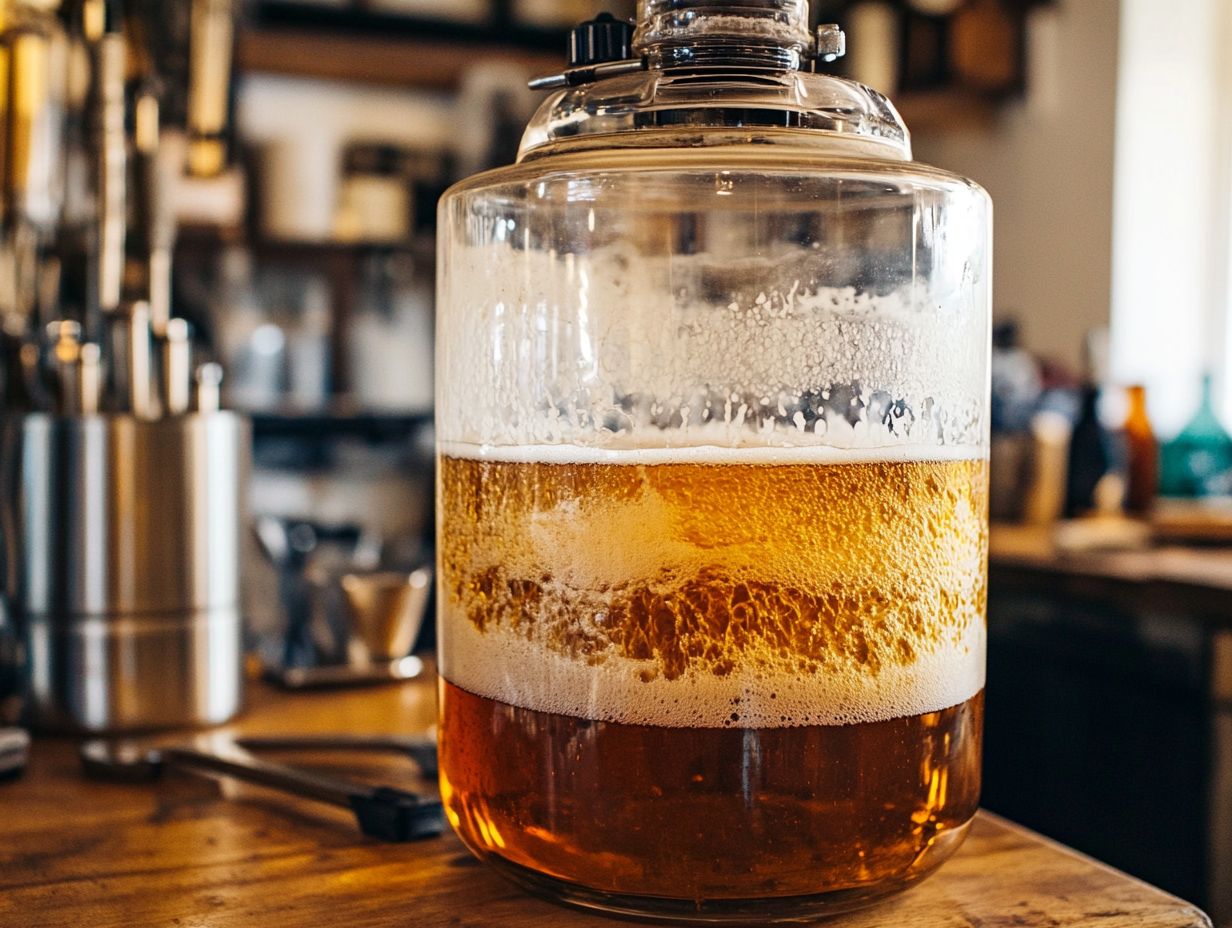
While fermentation trub isn t toxic and is technically safe to consume, it s best for you to steer clear of drinking it as a homebrewer. The potential for off-flavors and adverse effects on your beer s overall quality just isn t worth it.
This byproduct of the brewing process is a mix of yeast, hop residue, and proteins that can impart undesirable tastes and aromas to your finished product. Even if some may dismiss trub as mere waste, its composition can significantly impact the final flavor profile of your beer, leading to a muddled taste or even astringency.
If you re aiming for a crisp, clear lager, for instance, any leftover trub could interfere with the refreshing qualities you re striving for. Moreover, reintroducing trub into your brew could unleash unwanted microbial activity, further jeopardizing the integrity and shelf life of your beer.
It s wise to prioritize quality over quantity in your brewing endeavors, ensuring proper filtration and sanitation of all brewing equipment to avoid contamination.
What Are the Potential Risks of Consuming Fermentation Trub?
Be mindful of the potential risks associated with consuming fermentation trub. You may encounter unwanted flavors that can significantly alter the overall taste of your beer, as well as contamination issues arising from improper handling of the trub during the brewing process. Proper use of filtration methods and skimming techniques can help mitigate these risks.
These undesirable flavors often originate from yeast byproducts, hops, and other ingredients that break down during fermentation, potentially introducing off-flavors that detract from the intended taste profile of your final product. Contamination is another concern; if the trub comes into contact with unsanitized equipment or environments, it can lead to undesirable microbial growth that compromises both flavor and safety.
To mitigate these risks, you should prioritize proper sanitation of all your brewing tools, manage trub separation carefully during racking, and be strategic about when you use the trub in relation to fermentation stages. Employing filtration methods can also help eliminate unwanted components, resulting in a cleaner and more enjoyable brew.
How to Handle Fermentation Trub?
Effectively managing fermentation trub is essential for you as a homebrewer striving to uphold the quality of your beer. You can employ several techniques to achieve this, including:
- Removing the trub from the fermenter
- Utilizing filtration methods
- Performing cold crashing
- Transferring your beer to a secondary fermenter
Each of these methods helps to minimize contact with sediment, ensuring a cleaner, more refined final product.
1. Removing Trub from Fermenter
Removing trub from the fermenter requires you to siphon the clear wort from the fermentation vessel with precision, being careful to disturb the sediment at the bottom as little as possible to preserve the beer s flavor and quality.
This step is crucial for maintaining the integrity of your brew, as the trub contains not just yeast, but also unwanted particles that could negatively affect clarity and taste. To execute this task effectively, focus on a siphoning technique that minimizes agitation.
Using a racking cane will help direct the flow away from the sediment, while positioning the siphon at just the right level within the wort is essential to avoid contamination.
Prioritizing cleanliness is a must; ensure that all your equipment is properly sanitized to prevent any unwanted bacteria from ruining your final product. By adhering to these best practices, you ll be well on your way to crafting a crisp and flavorful beer.
2. Using a Filter or Strainer
Using a filter or strainer is a great way to remove trub, as it captures larger sediment particles while allowing the clear wort to flow through. This enhances the filtration process during your brewing operation. You can also use hop bags to contain hop matter and prevent clogging.
You have a variety of options to achieve optimal trub separation, including:
- Cone filters, often crafted from stainless steel, excel at trapping sediment while minimizing the risk of clogging. However, they do require thorough cleaning afterward.
- Mesh bag strainers present a convenient solution for home brewers. They allow for easy removal of trub, but their limited filtration capability means some particulates might still sneak into your final product.
- Plate filters offer a highly efficient filtering solution that yields exceptional clarity, although they can be more expensive and complex to operate.
Each type of filter has its unique advantages and considerations. It’s crucial for you to assess your specific needs before making a choice.
3. Cold Crashing
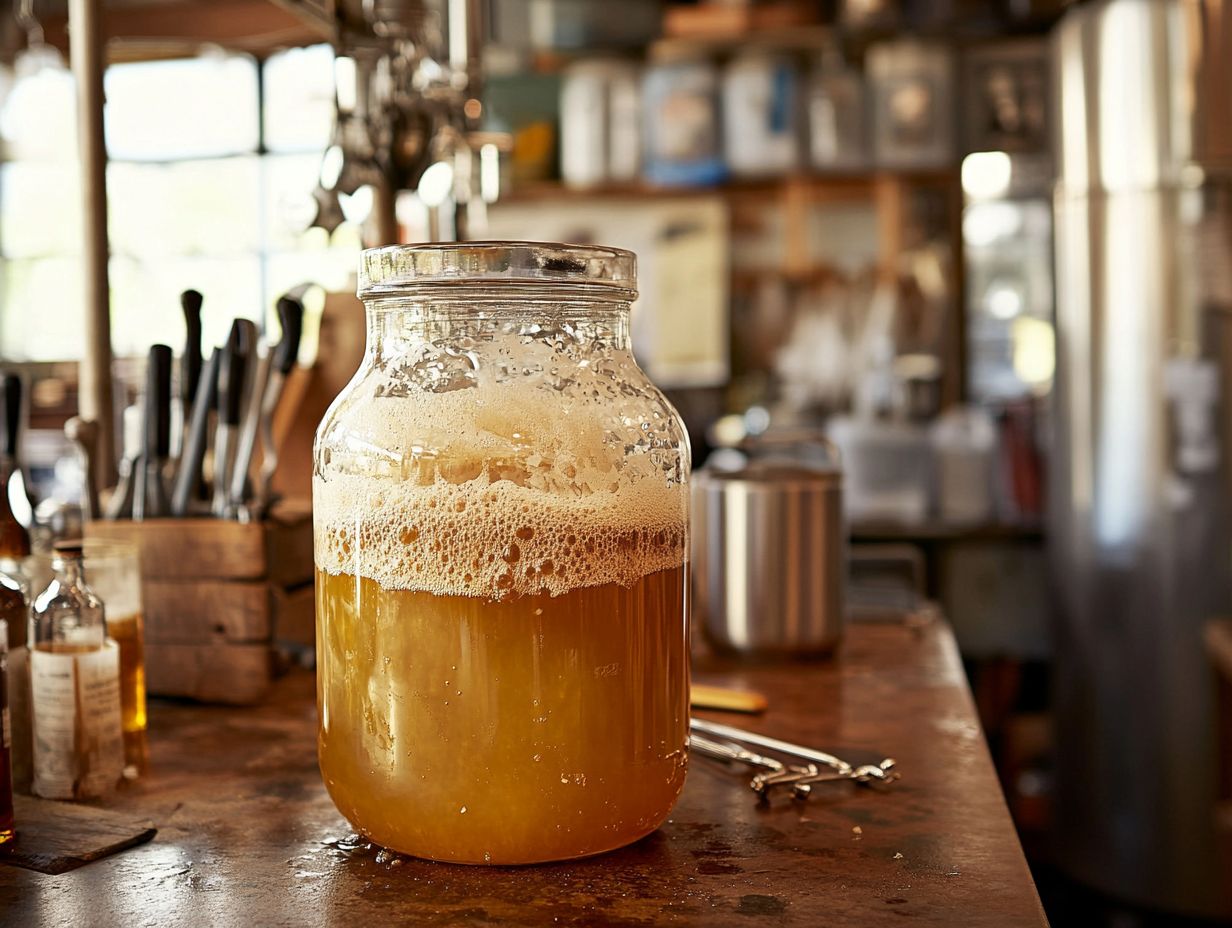
Cold crashing is an invaluable technique you can employ to expedite the settling of fermentation trub and sediment by lowering the fermentation temperature. This process helps clarify your beer before you move on to bottling or kegging.
Typically, you ll want to refrigerate your beer just above freezing, ideally around 32 F (0 C), for a duration that can range from 24 hours to several days. This cold crash effect causes the yeast and other particulates to compact and settle at the bottom of the fermentation vessel more efficiently.
Not only does this improve the appearance of your beer by reducing haze and sediment, but it also enhances flavor clarity, making each sip more enjoyable. For the best results, it s wise to ease into cold crashing gradually. This approach helps prevent shocking the yeast, allowing it to settle out of suspension effectively.
Remember, proper timing and temperature control are essential in achieving that sought-after clarity while maintaining the integrity of your brew.
4. Transferring Beer to a Secondary Fermenter
Transferring your beer to a secondary fermenter is not just a common practice; it’s a critical step that allows you to separate your brew from the trub while facilitating further fermentation and flavor development without the unwanted sediment. This process elevates the overall quality of your beer.
It effectively minimizes off-flavors that can arise from too much time spent in contact with the yeast and other particulates left over from primary fermentation. During this secondary phase, your beer has the chance to mature, encouraging the emergence of complex flavors and aromas that together create a fuller sensory experience. This secondary fermentation phase often helps in improving beer quality.
The secondary fermenter also opens the door to a world of creativity. You have the opportunity to add adjuncts like fruits, spices, or extra hops, which can enhance your beer even further. You can also use hop bags during this phase for better control. Breweries have discovered that employing a secondary fermenter often leads to a cleaner, more polished end product something that is undoubtedly more appealing to consumers.
What to Do with Fermentation Trub?
Regarding fermentation trub, you have a variety of elegant options at your disposal. You can choose to discard the trub, a straightforward approach, or consider reusing it for future brews, adding an element of resourcefulness to your brewing endeavors. Trub removal is key to maintaining the quality of your final product.
You can also choose to compost it, enriching your garden while minimizing waste and enhancing the overall brewing process. Each option allows you to make the most of your ingredients and contribute positively to your brewing experience.
1. Discarding Trub
Discarding trub is often the simplest choice for homebrewers. It helps eliminate waste and prevents negative impacts on your beer quality. However, you may miss some flavor contributions from residual yeast and hop matter.
Many brewers decide to discard trub based on factors like time constraints, available equipment, and the beer style you re aiming for. By removing sediment, you streamline your brewing process and reduce the risk of off-flavors during fermentation. Proper trub removal is essential for achieving clear wort. It s crucial to balance the benefits of this approach against the possibility of losing some of the rich and complex flavors that may reside within the trub.
Some seasoned brewers choose to collect and utilize the trub in secondary fermentations, convinced that certain residual yeast and hop compounds can enhance the final product. This nuanced decision-making highlights the importance of understanding your brewing objectives and carefully considering how best to achieve them. Sometimes, a whirlpool technique can help in consolidating trub for easier removal.
2. Reusing Trub for Future Brews
Reusing trub for your future brews can be a smart choice that not only saves you on yeast costs but also allows you to infuse unique flavors from previous batches into your new creations. This practice can minimize yeast costs and add complexity to your beer.
By tapping into the rich mix of microorganisms found in trub comprising not just yeast but also dead cells, hop residue, and protein you ll create a unique flavor profile that enhances the complexity of your beer. Proper filtration and sanitation are critical when reusing trub. This technique can lead to considerable savings and spark your creativity; however, it s crucial to be aware of the potential risks, such as contamination and off-flavors arising from bacteria or wild yeast.
To navigate these challenges, adopt best practices like carefully filtering the trub to isolate viable yeast and ensuring rigorous sanitation when storing or transferring it. It s wise to limit how many times you reuse yeast to preserve its health and vitality, striking a balance between cost-effectiveness and quality in your brewing endeavors. Reusing yeast too many times can lead to contamination issues.
3. Composting Trub
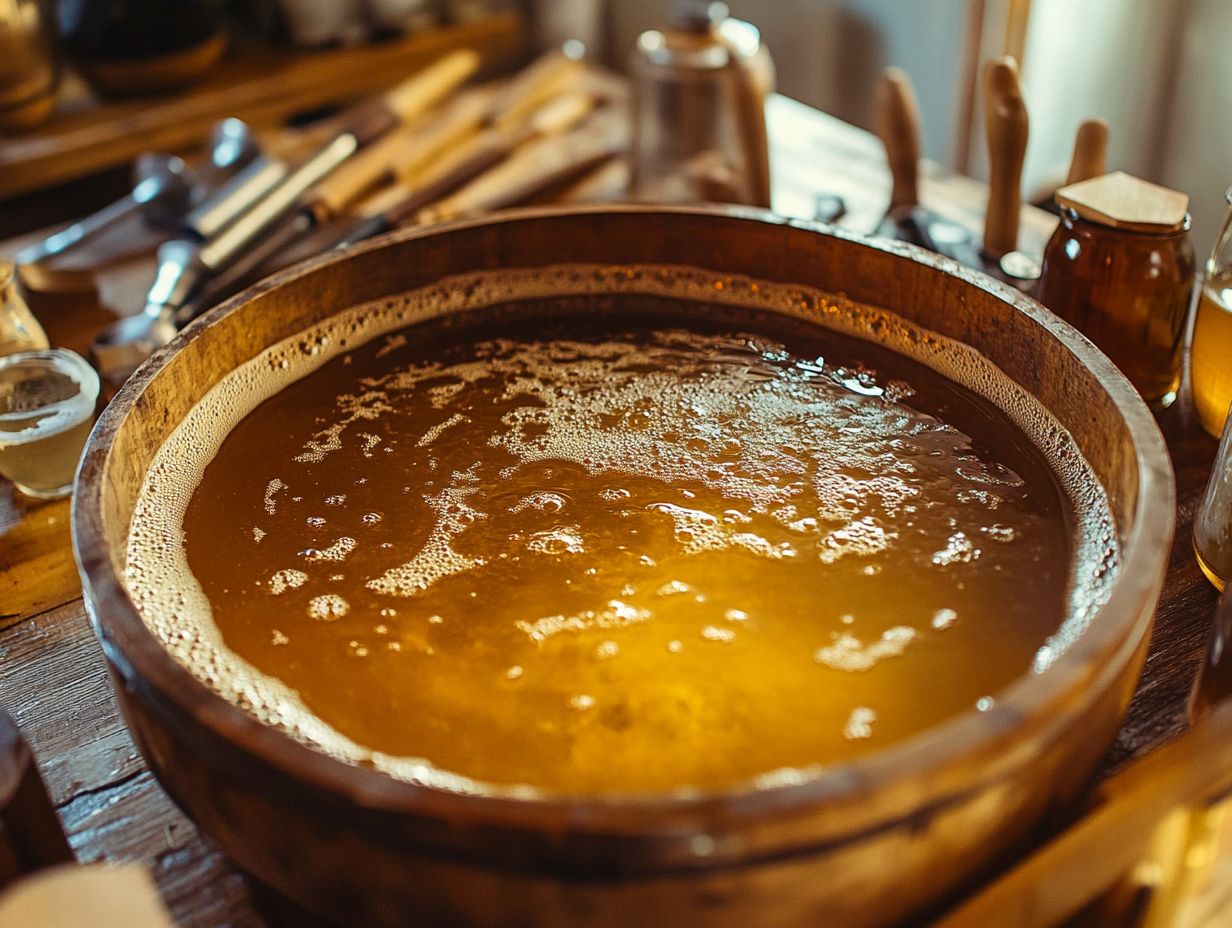
Composting trub presents an environmentally conscious choice that empowers homebrewers to transform organic waste into nutrient-rich compost for their gardens. This method complements sustainable brewing practices and offers a sustainable method to dispose of brewing by-products while enhancing your gardening efforts.
This process begins by collecting the leftover yeast, hops, and other ingredients from your brewing adventures materials that might otherwise be discarded. These ingredients are often rich in nutrients like proteins and fats. By composting these remnants, you not only reduce waste but also enrich your soil with vital nutrients that promote robust plant growth.
The compost you create will significantly improve soil structure, enhance water retention, and boost microbial activity essential elements of sustainable gardening practices. By utilizing trub in your composting efforts, you contribute to a closed-loop system that fosters biodiversity in your garden while also minimizing the carbon footprint associated with organic waste disposal.
Frequently Asked Questions
What is Fermentation Trub?
Fermentation trub is the layer of sediment that forms at the bottom of a fermenter during the fermentation process. It is made up of yeast, hop particles, and other materials that have settled out of the beer as it ferments.
Why is Fermentation Trub Important?
Fermentation trub plays an important role in the brewing process. It helps to clarify the beer and removes unwanted proteins and compounds that can affect the flavor and appearance of the final product.
How Do I Handle Fermentation Trub?
The best way to handle fermentation trub is to let it settle at the bottom of the fermenter. Then, carefully transfer the beer off of it using a siphon or racking cane.
Avoid stirring or disturbing the trub during this process. This helps maintain separation and prevents unwanted materials from mixing back into the beer.
What Happens if I Don’t Remove Fermentation Trub?
If you leave trub in the beer, it can cause off-flavors and cloudiness in the final product. It also makes it hard to achieve consistent brewing results.
How Can I Minimize the Amount of Fermentation Trub?
Using a whirlpool technique during cooling helps gather the trub into a thicker layer at the bottom of the fermenter. This leads to clearer wort and less trub in your beer.
Can I Reuse Fermentation Trub for Another Batch of Beer?
While you can reuse fermentation trub, it s generally not recommended. Reusing trub often includes a mix of dead cells and hop particles.
This mixture makes it hard to predict yeast performance in a new batch. Always start fresh with new yeast for the best results!

